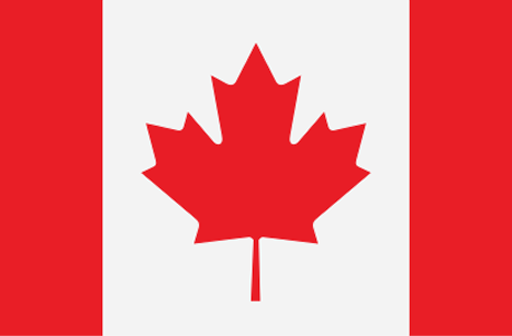What Symptoms Does Coronavirus Have?
What Symptoms Does Coronavirus Have?
Coronaviruses are a ménage of viruses that cause illnesses such as the Middle East respiratory syndrome, common cold, and acute respiratory syndrome. A new Coronavirus was recognized as the root cause of a disease outbreak that emerged in China last year, 2019. The virus is currently referred to as the severe respiratory syndrome coronavirus 2 (SARS-CoV-2). The disease caused by this virus is referred to as the coronavirus disease 2019 (COVID-19). In March 2020, the World Health Organization announced the COVID-19 wave a pandemic. Communal health organizations, the World Health Organization, and U.S. Centers for Disease Control and Prevention are observing the pandemic and placing current broadcast updates on their websites. These health organizations have also put up proposals for precautionary measures and managing the illness.

Source: Pexels.com
Signs/Indicators
The signs or indicators of the coronavirus disease 2019 could manifest from two to fourteen days after vulnerability. The time after being vulnerable and before symptoms begin to show is referred to as the incubation period. Common signs and indicators can include:
Exhaustion, feverish feelings, and cough
Loss of taste or smell could also be early indicators of the Coronavirus. Other symptoms that could manifest are Headache, runny nose, chest pain, muscle ache, chills, and difficulty breathing, etc. This list is not all-encompassing because other uncommon minor indicators have been detailed, such as vomiting, rash, diarrhea, and nausea, etc. Children exhibit signs close to the ones adults exhibit but altogether have a placid ailment.
The gravity of Coronavirus indicators can span from very placid to acute. While a cross-range of people might exhibit only a few signs, and other people might exhibit no signs at all; some people might exhibit chronic signs, such as pneumonia and acute shortness of breath, just about seven days after the onset of the signs.

The elderly are at greater risk of serious illness from the Coronavirus, and the older the victim is the higher the risk. Individuals with existing acute medical conditions are also at a higher risk of a serious ailment. Chronic medical conditions that escalate the risk of acute ailment from the Coronavirus are sickle cell disease, Type 2 diabetes, low immunity from a solid organ transplant, cancer, severe kidney disease, severe obstructive pulmonary disease, and various chronic heart diseases, etc. Other health conditions that might spike the risk of chronic illness are High blood pressure, chronic lung disease such as cystic fibrosis, Type 1 diabetes, liver disease, weak immune system, asthma, etc. However, this list is not all-encompassing; there still other underlying medical conditions not mentioned here that could increase the risk of serious Coronavirus ailment.
Evaluation tool for the Coronavirus
Evaluate your signs to find out if you might need to go for a Coronavirus screening.
The appropriate time to seek medical help
If you suspect that you are exhibiting the Coronavirus signs or you have been exposed one way or the other, thereby making you vulnerable, get in touch with your doctor immediately for medical advice. Communicate your signs and possible exposure to your doctor before you go for the clinical appointment. If you are exhibiting serious emergency Coronavirus signs, get help immediately. Emergency signs can include new confusion, trouble breathing, blue lips or face, severe chest pain, drowsiness, etc.
Ensure you contact your doctor for guidance if you have signs of the Coronavirus; communicate with your doctor about other acute medical conditions you have if any, such as lung or heart disease.
Causes
The Coronavirus transmission rate is very rapid, and more studies are being done to understand the depth of its transmission rate. Records have revealed that it transmits from person to person especially those in close contact within two meters to each other. The virus transmits via inhaling droplets released into the atmosphere when an individual with the virus sneezes, talks, or coughs. These microbes can be inhaled or land in the mouth or nose of someone close by. It can also be transmitted if an individual comes in contact with a surface that has the virus on it and then goes on to touch his or her eyes, mouth, or nose, even though this is not regarded as the main transmission mode.
Risk elements
The risk elements for the Coronavirus could consist of the following:
- Close contact with an infected person
- A current journey from a place of abode that is an area with a record of an upsurge
Impediments
Even though the majority of persons with the Coronavirus have placid to average signs, the disease can cause acute medical impediments and lead to loss of life in some persons. Aged people with the acute medical state are at more risk of becoming fatally ill with the Coronavirus. The impediments can comprise of the following: heart problems, pneumonia, organ failure, shortness of breath, blood clots, chronic kidney injury, other bacterial and viral infections, acute lung defect that leads to a very low supply of oxygen into the bloodstream.
Precautionary measures
Currently, there is no available inoculation to forestall the Coronavirus; however, there are steps you can take to minimize your risk of contracting the infection. The Center for Disease Control and the World Health Organization advises the following precautions:
- Keep away from being in close contact with any individual who exhibits signs or is infected.
- Do not go out unless it is necessary; stay home and maintain distance between yourself and others particularly if you have an underlying health condition. Always remember that some people are asymptomatic.
- Stay away from a large gathering
- Do not share towels, bedding, and other household items if you are unwell.
- Wash your hands regularly with soap and water for at least 20 seconds, or use an alcohol-based hand sanitizer that has at least 60% alcohol.
- Do your very best not to touch your mouth, nose, and eyes
- Do daily thorough disinfection of high-touch surfaces, such as remote controls, door handles, counter-tops, and light switches, etc.
- Make use of a face mask when in public places, such as the mall, where it is challenging to avoid close contact. Only make use of non-medical cloth masks as surgical masks and N95 respirators are reserved for frontline health workers.
- Sneeze or cough into your elbow or a tissue. Dispose of the used tissue and wash your hands immediately with soap and water.
- Keep away from public spaces if you are unwell unless you are going to the hospital. Avoid taxis and public transportation, taxis if you are unwell.









Leave a comment